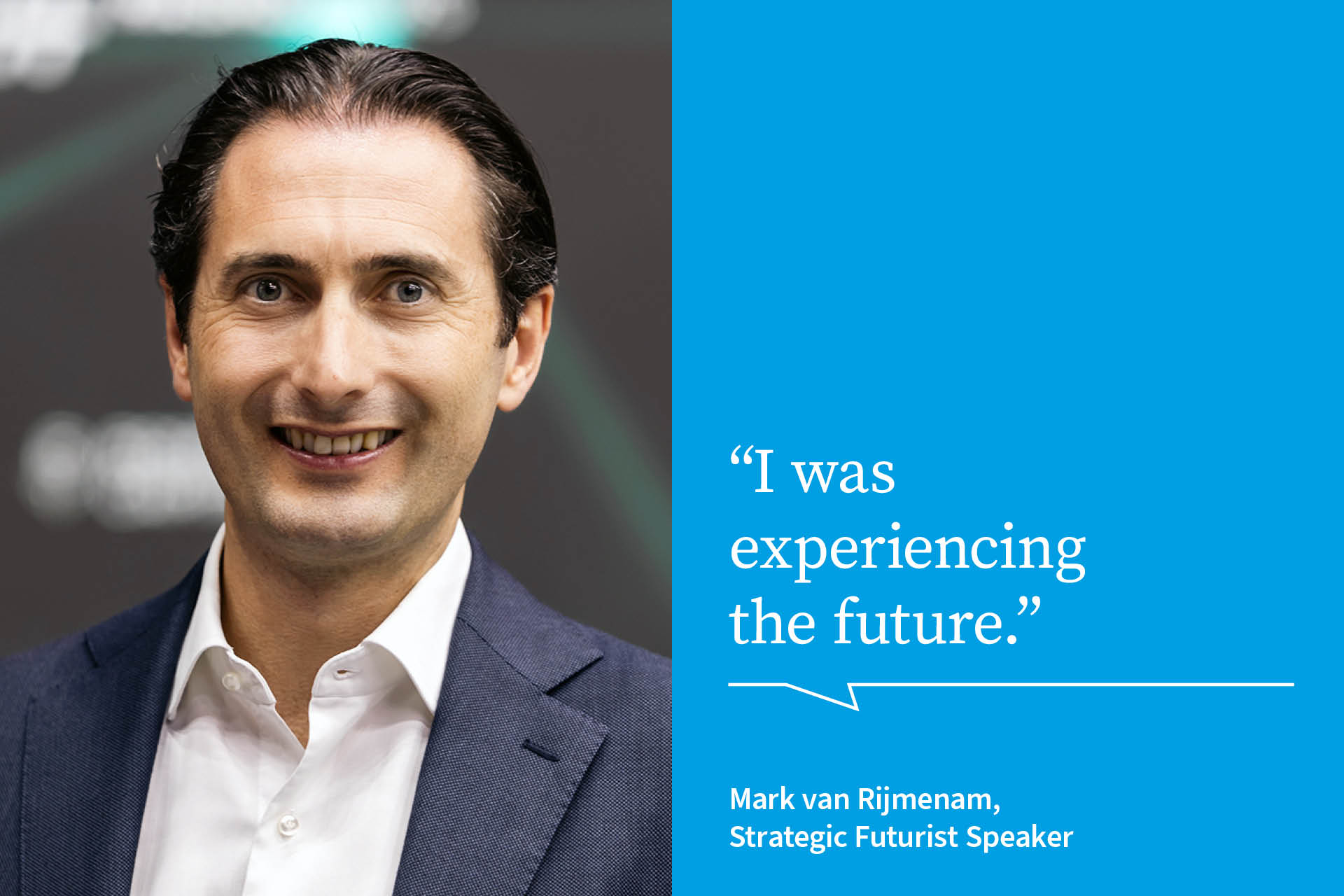On the road to mind-blowing insurtech with brain-computer interfaces
Applications that can connect our brains with computers no longer exist solely in the realms of science fiction – and according to Dr Mark van Rijmenam, insurers could benefit.
Imagine a form of insurtech that allows underwriters to perform actions via telepathy or to download their knowledge in digital form to share with colleagues. It seems far-fetched but it’s no longer a totally implausible scenario.
Brain-computer interface (BCI) technology, as it’s called, once the preserve of sci-fi literature, is now a reality in some domains. Most progress has been made in the development of medical aids for people who have lost motor function or mobility.
Neuralink(1), for example, is conducting a medical device trial in the US of its fully-implantable, wireless BCI that enables people with paralysis to control external devices. Earlier this year, the first human patient implanted with a Neuralink brain-chip attained the ability to control a computer mouse using their thoughts.
Paris-based NextMind(2), now part of Snap Inc (owner of SnapChat), has developed a wearable headset device that uses brain signals to move images on a PC interface. Dr Mark van Rijmenam, a strategic futurist who specialises in digital disruption, tried an early version of NextMind’s plug and play device back in 2021 and says it blew his mind: “I was able to play a game with my mind, change TV channels with my mind and use some basic controls on my computer.

Van Rijmenam says the tech has come a long way since then: “All the big tech companies are exploring BCI tech. The ground has been laid for the final frontier; if we can leverage our thoughts it changes everything, across a range of applications from gaming, to medical and also defence.”
There are big implications for insurers: The most achievable potential for BCI-based insurtech lies in the healthcare sector where insureds could benefit from life-changing rehabilitation techniques that restore physical and cognitive capability.
The enhanced ability to record and analyse brain function through BCI tech, combined with virtual reality and AI, further promises to revolutionise neurology diagnosis and treatment techniques for dread diseases such as Alzheimer’s and Parkinson’s.
Insurance cyborgs
Beyond medical settings, are we likely to see BCI tech employed in personal insurance underwriting − in the same way that vehicle-based telemetry is transforming car insurance, for example?
“The ability for underwriters to attain deeper insights around risk assessment factors in personal insurances, where the insured agrees to wear a BCI device for example, or even an embedded device, is theoretically very attractive,” van Rijmenam says. “In reality, there will obviously be massive, even insurmountable, privacy and ethical considerations.”
From a privacy point of view, the distinction between different BCI applications and devices could be important, however, van Rijmenam thinks. “I’m not sure how many people would be willing to do it outside the healthcare application sphere. It’s sensitive personal data that is digitally downloaded: your thoughts. But having a wearable device means that the user at least has a sense of control of their neural data and who has access to it.”
Augmented underwriters
So should old-school underwriters fear the arrival of cyborg competitors, whose cognition is enhanced by embedded BCI or wearable BCI, like Neo from the Matrix sci-fi movie series? It’s simply not necessary, van Rijmenam reckons.
“AI is already being exploited to do the hard data evaluation work on underwriters’ behalf. Where BCI might realistically contribute efficiencies is by helping underwriters communicate faster with their computers to access the output.”
Defining brain-computer interface technology
• A brain-computer interface (BCI) is a device that lets the human brain communicate with and control a computer. Working in the other direction, a BCI can enable a computer to communicate with and even control a human brain.
• BCIs come in two categories: Invasive BCIs require physical sensors to be connected to the brain to pick up electrical signals. Non-invasive BCIs can retrieve signals from the brain without physical contact with the brain itself, through the use of headsets, for example. In this case, however, signals will be weaker than with invasive techniques.
• The clearest application of BCIs is in a medical setting, especially in neurological rehabilitation, whereby embedded chips or wearables can give patients direct control over paralysed or prosthetic limbs. BCIs also allow people to control computers by thought and can even facilitate ‘mindwriting’ dictation.
• A possible challenge to greater use of BCI devices, especially invasive techniques in a clinical setting, is that they will need regulatory approval. Ethical, privacy and data protection issues will be significant when BCIs are capable of harvesting neural data, as in human thoughts.
Dr Mark van Rijmenam is a strategic futurist, also known as The Digital Speaker, who lives and breathes cutting-edge technologies to inspire Fortune 500 companies and governments worldwide. He is an entrepreneur and 5x author.
(1) The US-based Neuralink Corp.
(2) Neuralink and Nextmind are not associated with Hannover Re in any way and may be protected as third-party intellectual property. Hannover Re does not claim any intellectual property rights in these terms.
User questions
Answered questions
Unanswered questions
Views: 1924
Downloads: 0
| 0 % | |
| 0 % | |
| 0 % | |
| 0 % | |
| 0 % |
Page is favored by 0 user.
Contact inquiries: 0


